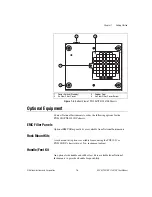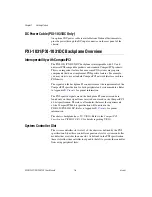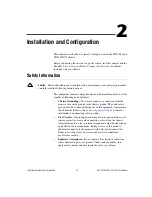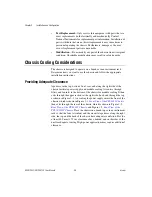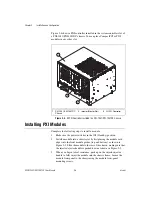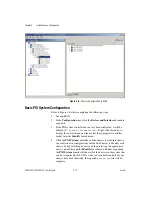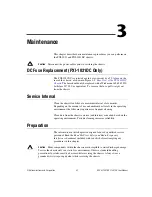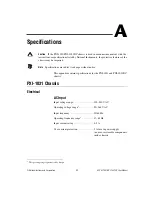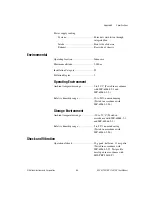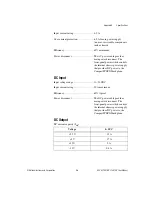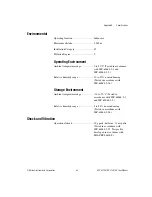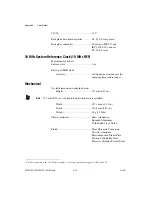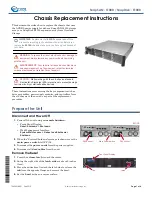
Chapter 2
Installation and Configuration
©
National Instruments Corporation
2-11
NI PXI-1031/PXI-1031DC User Manual
5.
Apply the chassis number labels (shown in Figure 2-7) included with
your kit to each chassis in your PXI system, and write in the chassis
number accordingly in the white space.
Figure 2-7.
Chassis Number Label
Trigger Configuration in MAX
Each chassis has one or more trigger buses, each with eight lines numbered
0 through 7 that can be reserved and routed statically or dynamically. Static
reservation “pre-allocates” a trigger line to prevent its configuration by a
user program. Dynamic reservation/routing/deallocation is performed
on
the fly
within a user program based upon National Instruments APIs such
as NI-DAQmx. Static reservation of trigger lines can be implemented by
the user in MAX through the
Triggers
tab. Reserved trigger lines will not
be used by PXI modules dynamically configured by programs such as
NI-DAQmx. This prevents the instruments from double-driving the trigger
lines, possibly damaging devices in the chassis.
Complete the following steps to reserve these trigger lines in MAX.
1.
In the
Configuration
tree, click the PXI chassis branch you want to
configure.
2.
Click the
Triggers
tab at the bottom of the right-hand pane.
3.
Select which trigger lines you want to statically reserve.
4.
Click the
Apply
button.
Using System Configuration and Initialization Files
The PXI specification allows many combinations of PXI chassis and
system modules. To assist system integrators, the manufacturers of PXI
chassis and system modules must document the capabilities of their
products. The minimum documentation requirements are contained in
.ini
files, which consist of ASCII text. System integrators, configuration
utilities, and device drivers can use these
.ini
files.
The capability documentation for the PXI-1031/PXI-1031DC chassis is
contained in the
chassis.ini
file on the software media that comes with
the chassis. The information in this file is combined with information about

